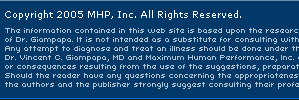 |
 |
 |
 |
 |
 |
 |
 |
 |
 |
 |
 |
 |
 |
 |
 |
 |
 |
|
 |
|
Landmark Studies in HGH Therapy:The Rudman Study
THE STUDY THAT BROUGHT HGH TO THE FOREFRONT OF ANTI-AGING THERAPY
In 1985, endocrinologist Dr. Daniel Rudman from Madison, Wisconsin, published in the Journal of American Geriatrics Society a brand new theory about aging based on his many years of extensive clinical experiments and research. He clearly indicated in the article that human aging is a result of HGH deficiency, and is not the commonly accepted view of "inevitable natural phenomenon." He further concluded that by stimulating the pituitary gland with HGH, the gland could be made to recover its function to secrete HGH again. This discovery not only stops the aging process, but also turns back the biological clock to its adolescent stage. He tested his theory with 26 men between the ages of 61 and 80. He gave half of the men injections of HGH (Human Growth Hormone) three times a week for six months. At the end of the study, the differences between the two groups was startling.
Those on the HGH gained an average of 8.8% lean body mass and lost 14% body fat without dieting or exercise. Their skin was thicker and firmer, their bones had increased in density, they had higher energy levels, enhanced sexual performance, regrowth of heart, liver, spleen, kidneys and other organ tissues that shrink with age, greater cardiac output, superior immune function, lower blood pressure, improved cholesterol profiles, faster wound healing, mood elevation, improved sleep and increased memory retention. The conclusion by Rudman and his colleagues was that the changes in their body compositions were "equivalent in magnitude to the changes incurred during 10 to 20 years of aging." His experiment was immediately hailed as the breakthrough it was.
Encouraged by Dr. Rudman's HGH theory, the National Institute on Aging began to carry out nine clinical experiments in 1992. They took five years to complete and the results, unprecedented and far-reaching in influence, proved once again that Dr. Rudman's theory was correct.
|
|
|
 |
 |
 |
 |
 |
 |
 |
 |
 |
 |
 |
 |
 |
 |
 |
 |
 |
 |
 |
 |
 |
|